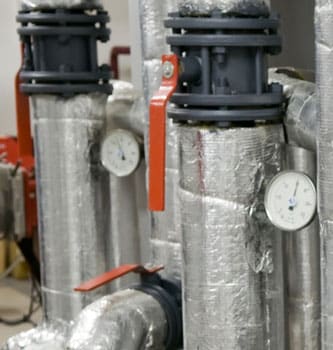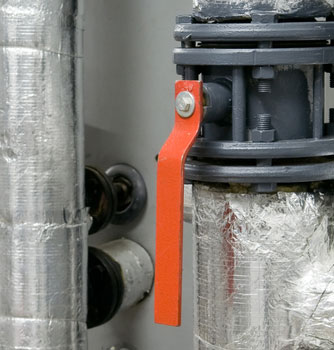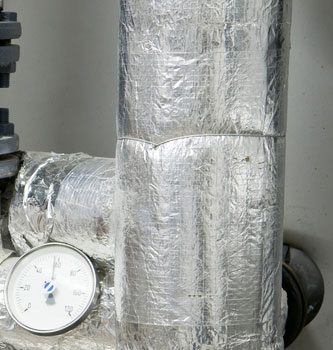Steam Boiler BG03 Blowdown
What are the safety requirements for a Steam Boiler Blowdown System?
The HSE previously gave guidance on the blowing down of steam boiler systems, under Health and Safety Guidance Note PM60 Steam Boiler Blowdown Systems 2nd Edition 1998. This has now been replaced with Guidance for Industrial Steam Boilers (BG03).



Speak with our experts
Fill out our quick and easy contact form with your enquiry and we'll get back to you.
Guidance For Industrial Steam Boilers (BG03)
Guidance for Industrial Steam Boilers (BG03) is a guidance document intended to provide advice to designers, specifiers, manufactures and installers. In addition, those responsible for the management and operation of a steam plant as well as the Competent Persons. The latest document (BG03) is applicable to both new and existing installations of steam boilers and boiler blowdown valves.
What is Steam Boiler TDS (Total Dissolves Solids?)
To get to the bottom of the topic we’ve let our in house specialist explain more about boiler blowdown valves. Imagine you have a saucepan of boiling water and you let all the water evaporate. Inevitably, there will be left over deposits on the bottom of the pan. This is all the impurities left behind as the “clean steam” evaporates. Now imagine this on a large industrial scale. That's why it's important to measure, monitor and manage correctly before it becomes a problem.
With an industrial steam boiler, as the water in the boiler evaporates it leaves the impurities behind. Thus making the boiler water more and more concentrated with TDS. As a result, it coats the inside of the boiler and the fire tubes, making them inefficient, foam, prime and carryover and sometimes even dangerous.
The more these deposits build up, the more inefficient the boiler can become.
High & Low TDS
- High TDS can lead to Plant & Production downtime. Situations like cold spotting on process heating /cooling batches can cost thousands in waste and poor product quality. If the boiler is priming (foaming), then all the pipework, valves and steam traps will be coated from the deposits. The knock on effect of this is poor heat transfer, steam traps failing open or sticking locked and valves seizing up with deposits.
- Low TDS on the other hand, can lead to blowing down too much heat energy contained within the heated and chemically treated water. Resulting in noticeably increased costs of fuel & chemical treatment.
It is therefore essential to ensure accurate blowdown methods in order to maintain steam quality. You can rely on the team at Valveforce to offer advice, carry out a boiler blowdown survey, and conduct detailed reports. We ensure that our customer’s boilers are blowdown safely, efficiently and in accordance with BG03.
A Valveforce Focus on Boiler Blowdown
When it comes to steam boiler blowdown everyone must follow the Blowdown Systems, Guidance for Industrial Steam Boiler (BG03). If you are unsure or need clarification on boiler blowdown valves then you should seek specialist advice.
There are three main type of steam boiler blowdown:
1) Bottom Blowdown:
2) Boiler Continuous Blowdown
3) Boiler Sight Glasses:
Boiler Sight Glasses
At Valveforce we understand the importance of proper cleaning and maintenance of the water column and the water gauge glass, or sight glass.
The water gauge glass on a boiler enables the operative to visually observe and verify the actual water level in the steam boiler. However, if not properly cleaned and maintained scale can build up and a gauge glass can appear to have sufficient water. When in actual fact the boiler is operating in a low or low water condition. The water column must remain clean to ensure the water level in the gauge glass accurately represents the water level in the boiler.
All plant operators must undertake proper blowdown procedures in order to keep the water piping clean, even if the probes remain clean for extended operational periods. The risk for sediment build-up in the water piping is quite high and the user may consider their local water quality as an influencing factor to determine the frequency of the blowdown.
After performing the blow-down procedure, if the water level does not return to normal promptly, the connecting piping may be partially clogged, therefore requires cleaning.
Usually, the sight glass blowdown water is returned to the Boiler blowdown vessel, in a separate line.
Valveforce blowdown vessel designs cool down water from boiler purges including:
- Bottom blowdown
- Level gauge glass blowdown
- Level probe standpipes blowdown
- TDS continuous blowdown
The above information is a quick overview and for information only. Our in house boiler specialists can offer technical advice, carry out boiler blowdown surveys and conduct detailed reports to ensure that your boilers are being blowdown safely, efficiently and in accordance with BG03.
Bottom Blowdown
You require bottom blowdown to discharge the deposited solids and sludge that drop to the bottom of the boiler shell. This requires regular clearing via the rapid action of a bottom blow down valve.
This bottom blowdown valve is either manually or pneumatically actuated to ensure a quick dump of high pressure boiler water. This jolts up the bottom of the boiler and sucks out any deposited debris or particles.
Generally, you should blast the valves for three to five seconds once per shift. Any longer for the bottom blowdown, and it will waste valuable heated and treated hot boiler water. Following this, the bottom blowdown water is discharged into a suitable blowdown pit or more commonly, a specific boiler blowdown vessel.
The advantages of a blowdown vessel over a blowdown pit are:
- They are fraction of the cost and size, of a blowdown pit
- Quick and easy to install
- Low maintenance solution for the replacement of blowdown pits
- Safe- no cover plate to lift or open area for staff to fall into
- Dissipates heat more readily
The blowdown vessel is also designed to safely handle continuous blowdown, blowdown from level control chambers and level gauge glasses. It can also accommodate other high pressure drains providing the size is correct.
Boiler Continuous Blowdown
Here we are looking at the management of the Total Dissolved Solids (TDS) or the solids in suspension contained within the water inside the boiler.
To monitor this it is very common to have a stabbing on the side of the steam boiler shell. Which feeds a conductivity probe into the water itself, sending a conductivity signal back to the TDS controller. The TDS controller will then measure the TDS reading and open / close the TDS control valve in line with the set point and the proportional band (+/-) the water TDS level is to control at.
Typical TDS Control System
Valveforce can design and supply you with the ancillary equipment associated with boiler blowdown: TDS Controllers, Conductivity Electrode, Control valves, Globe Valves, Check valves and Automatic Blowdown Valves. The blown down TDS water is valuable because it's heated. In order to recover this heat it is very common to use a continuous blowdown flash vessel system.
At Valveforce we aim to recover as much energy into the boiler feed-tank, by pre heating the feed water and using the flash steam to direct heat into the feed tank. Find out more about Flash Vessels here.
How Can Valveforce Help You?
Valveforce offers you peace of mind that you are acting in compliance with the HSE guideline BGO3. Furthermore we can ensure that your bottom blowdown works efficiently and effectively. You can rely on our team of experts to offer advice and subsequently carry out complete boiler house and boiler surveys.
In the boiler house we will:
- Investigate feed-water conditioning
- Supply boiler feed-tank and deaerator plant
- Provide water treatment equipment such as softening and RO plant.
With the boiler we:
- Review boiler control equipment for level control
- Check boiler blowdown
- Test boiler heat recovery equipment
Valveforce will produce detailed reports to ensure that your boiler blowdown valve and boiler houses are up to date. Especially with the latest standards and legislation. If you would like further advice, please contact Valveforce on 0121 7111 908 and ask for the boiler house specialist team.

